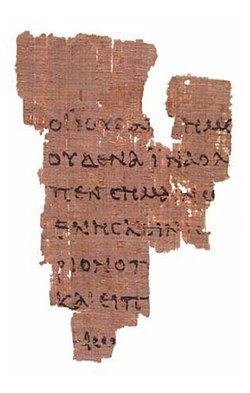The collection
The Rylands Papyri collection held by the John Rylands University Library, is one of the most extensive and wide-ranging papyrus manuscript collections in the United Kingdom. It includes religious, devotional, literary and administrative texts. The collection includes 7 hieroglyphic and 19 hieratic papyri which are funerary documents dating from the 14th century BCE to the 2nd century CE. It also holds 166 demotic papyri, mostly dating from the Ptolemaic period, including the famous Petition of Petiese (pRylands 9) [3] from the reign of Darius I of Persia. [4]
The collection also houses about 500 Coptic papyri, and around 800 Arabic papyri consisting of private letters, together with tradesmen's and household accounts. Among the roughly 2,000 Greek papyri are the famous fragments of the Gospel of John and Deuteronomy, the earliest surviving fragments of the New Testament and the Septuagint (Papyrus 957, the Rylands Papyrus iii.458) [4] [5] respectively; Papyrus 31, a fragment of a papyrus manuscript of the Epistle to the Romans ; and Papyrus 32, a fragment of the Epistle to Titus. Also held in the collection is Papyrus Rylands 463, a copy of the apocryphal Gospel of Mary in Greek, and John Rylands Papyrus 470, a prayer in Koine Greek to the Theotokos, written between 3rd to 9th centuries [6] [7] in brown ink, the earliest known copy of such a prayer. It was acquired by the Library in 1917. [8]
This page is based on this
Wikipedia article Text is available under the
CC BY-SA 4.0 license; additional terms may apply.
Images, videos and audio are available under their respective licenses.
